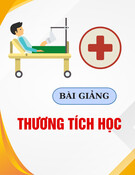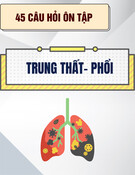
Can Tho Journal of Medicine and Pharmacy 9(5) (2023)
91
SOCIOECONOMIC FACTORS ASSOCIATED WITH
TOOTH EXTRACTION AT CAN THO UNIVERSITY OF MEDICINE AND
PHARMACY HOSPITAL IN 2021
Le Vu Phuong Khanh*, Huynh Le Nghia Hiep, Bui Thi Ngoc Man
Can Tho University of Medicine and Pharmacy
*Corresponding author: 1753020020@student.ctump.edu.vn
ABSTRACT
Background: Tooth loss can lead to occlusal disorders and temporomandibular joint issues,
resulting in pain and deteriorating chewing ability. Oral health problems affect health-related
quality of life, especially anxiety, distress, and shame. However, the number of studies describing
these effects in Vietnam was still limited. Objectives: To analyze of the relationship between dental
status and socioeconomic factors in patients with tooth extraction. Materials and methods: A
descriptive cross-sectional study of 200 tooth extraction patients aged 18 years and older was
conducted at Can Tho University of Medicine and Pharmacy Hospital. Data were analyzed using
SPSS 20's Frequency test, Chi-Square test, and Fisher's Exact test. Results: 256 teeth were
extracted, in which the main reason was misaligned teeth (38.28%), decayed teeth (25.39%), and
retained roots (12.89%). The extraction rate of females (63.32%) was higher than that of males
(36.68%), and that of urban patients (71.43%) was higher than that of rural patients (28.57%).
People who brushed their teeth less than twice a day, and did not have dental visits in the past 12
months accounted for the highest proportion (92.5%,58.5%). Low education level was the reason
for the prevalence of oral diseases, while higher education level played a preventive role (p=0.046).
In the elderly group, the proportion of patients with tooth extraction due to oral disease increased
(p=0.002). Conclusions: A patient had less than two teeth extracted on average. Tooth decay and
misaligned teeth were the most common causes of extraction. Educational status and place of
residence were considered to be significant factors influencing the reasons for tooth extraction.
Keywords: tooth extraction, tooth loss, socioeconomic, oral hygiene
I. INTRODUCTION
In recent decades, the treatment tends to be "maximum restorative, minimally
invasive" and tooth extraction is considered a last resort or the only option in some cases
[2]. Extraction is a common treatment for oral diseases, mainly caries, and periodontal
diseases with complex etiology and biological, social, and behavioral risk factors. Each
tooth has a specific role in the sets of teeth and is an indispensable part of the chewing
system [11]. Therefore, the loss of tooth causes occlusal disorders, and changes in the
temporomandibular joints, thereby leading to pain, and dysfunctional chewing [10]. Oral
health problems have a negative impact on quality of life such as anxiety, stress, shame,
daily activities, and social relationships [12, 3]. The correct diagnosis of the dental condition
and appropriate treatment will help patients avoid complications, a waste of time and
money. The evaluation of clinical features, subclinical images, and cause of tooth extraction
greatly contributes to the diagnosis and treatment process. However, in Vietnam, few
studies have been done to assess the impact of factors associated with causes of tooth
extraction in public health facilities, especially at Can Tho University of Medicine and
Pharmacy Hospital. Therefore, this study was conducted with the goal of analyzing the






























